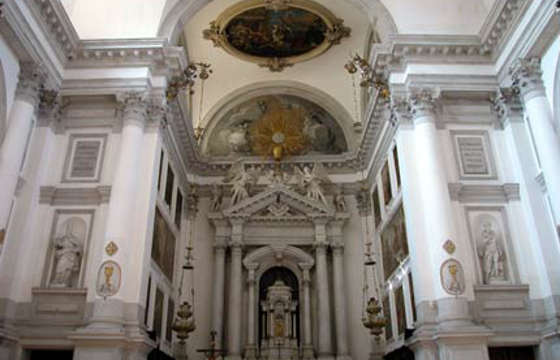San Stae Church: things to see
- 3 min read
San Stae Church, unique and captivating, is a Catholic place of worship located in the heart of Venice, in the picturesque Santa Croce district. In this article, we will explore the history, architecture, and artwork that make this church a true gem of the lagoon city.

History
San Stae Church has a rich and fascinating history, dating back to the 12th century. Initially founded under the title of Saint Isaiah the Prophet, the church has undergone various transformations over the centuries. From a subsidiary parish of San Pietro to a collegiate church, San Stae has always played an important role in the religious life of Venice. In 1681, the procurators of the fabric decided to rebuild the church, changing its orientation and creating a Palladian-inspired Baroque façade.
The Façade
The façade of San Stae Church is a Baroque masterpiece, characterized by a giant order of semi-columns, rhythmic entablatures, and rich sculptures by renowned artists of the era. The portal’s tympanum is pierced by an elaborate rose window and crowned by a sculptural group depicting the miracle of Saint Eustace’s conversion. The acroterial statues and bas-reliefs tell stories of faith and martyrdom, creating an evocative and sacred atmosphere.
The Interior
Designed by the architect Giovanni Grassi, the interior of the church features a single nave with a vaulted ceiling and three chapels on each side. The presbytery is dominated by a monumental altar with a tempietto-shaped tabernacle and frescoes depicting sacred scenes. The side walls host a cycle of paintings dedicated to the twelve apostles, created by various artists of early 18th-century Venice.
Right Chapels
The right chapels are adorned with highly valuable artworks, including the altarpiece of the Miraculous Conversion of Saint Eustace by Giuseppe Camerata and Saint Oswald in Glory by Antonio Balestra. Each chapel tells a story of faith and devotion, enriching the spiritual experience of visitors.
Left Chapels
The left chapels are dedicated to Venetian patrician families, such as the Foscarinis, and feature artworks of significant artistic and historical value. Among the most notable pieces are the Crucifix by Giuseppe Torretto and the altarpiece of the Assumption by Francesco Migliori, conveying a sense of sacredness and beauty.
The Sacristy
The sacristy of San Stae Church is a highly evocative space, enriched with paintings and sculptures that narrate stories of faith and miracles. Among the most significant works are the painting Dead Christ by Pietro Della Vecchia and the tondos depicting the Miracle of the Blind Born and the Preaching of Christ. The sacristy is a place of peace and contemplation, ideal for those who wish to immerse themselves in the sacred atmosphere of the church.
The Organ
The pipe organ by Gaetano Callido, located at the back of the church, is a true masterpiece of craftsmanship and music. Decorated with plant motifs, cherubim, and musical angels, the organ creates a magical and solemn atmosphere during religious services. Its majesty and beauty make it one of the hidden treasures of San Stae Church.
San Stae Church is much more than a place of worship; it is a veritable treasure trove of artistic and spiritual riches. Its millennia-old history, Baroque architecture, and the artworks it houses make it a unique place in the world, to be visited and admired with eyes full of wonder and a heart filled with devotion.
Do not miss the opportunity to discover the beauty and spirituality of San Stae Church, a place that will leave you speechless and fill your soul with deep emotions. Come visit and let yourself be enchanted by its magnificence and sanctity.
